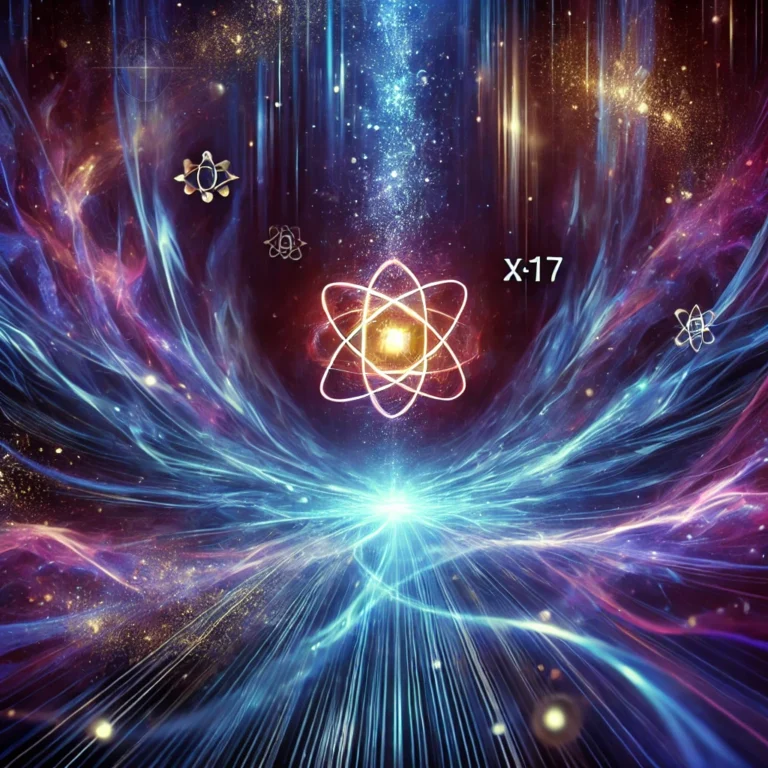-
Arif Uz Zaman Badhon
- Published Date:

Share This
For centuries, physicists have sought to understand the fundamental forces that govern our universe. Currently, five forces are recognized:
- Gravity – Governs massive celestial bodies.
- Electromagnetism – Controls electricity, magnetism, and light.
- Strong Nuclear Force – Binds atomic nuclei together.
- Weak Nuclear Force – Responsible for radioactive decay.
- Dark Energy – Drives the universe’s accelerated expansion.
But could there be a sixth fundamental force? Over the last few decades, experimental physicists and theoretical scientists have suggested the existence of an additional force based on anomalies in particle interactions, dark matter behavior, and unification theories.
In this blog, we’ll explore:
- Historical and recent experiments hinting at a new force
- Theoretical implications of a sixth force
- A detailed simulation to model particle behavior influenced by an unknown force
Let’s dive into the Science behind this exciting mystery.
1. The Hunt for a New Fundamental Force
Physicists have been searching for a new force through various experiments, and some recent discoveries suggest possible new Physics.
A. The X17 Particle: A Potential Fifth or Sixth Force?
Key Scientist: Dr. Attila Krasznahorkay (Hungarian Academy of Sciences)
In 2016 and again in 2019, a team of Hungarian nuclear physicists led by Dr. Attila Krasznahorkay observed an anomaly in nuclear transitions that suggested the presence of a new particle.
Experiment: Proton-Neutron Energy Difference in Beryllium-8
- The team bombarded beryllium-8 nuclei with high-energy protons.
- They observed an unexpected energy deviation in emitted electron-positron pairs.
- The anomaly suggested the presence of an unknown force carrier, named the “X17 particle”, which has a mass of approximately 17 MeV/c².
- A similar anomaly was later observed in helium nuclei, reinforcing their claim.
What This Means
- The X17 particle could indicate a new force of nature.
- It might be a “protophobic force”, meaning it interacts weakly with protons.
- If confirmed, this force would be in addition to gravity, electromagnetism, and nuclear forces.
B. Dark Matter and the Hypothetical “Dark Force”
Key Scientists: Edward Witten, Sean Carroll, Lisa Randall
Dark matter accounts for 85% of the universe’s total mass, yet we don’t know what it is made of. One possibility is that dark matter interacts via a new, unknown force—often called the “Dark Force” or “Fifth Force”.
Ongoing Experiments Searching for Dark Matter Interactions
- XENON1T Experiment (Italy) – Aims to detect dark matter particle interactions.
- LUX-ZEPLIN (LZ) Experiment (USA) – One of the most sensitive dark matter detectors.
- ATLAS and CMS Experiments at CERN – Studying potential new particles beyond the Standard Model.
What This Means
- If dark matter interacts through an unknown force, it could be a sixth force of nature.
- The “Dark Photon” hypothesis suggests that dark matter particles communicate via an unknown force-carrying boson.
- Some anomalies in cosmic rays and galactic rotation hint at hidden physics.
2. Theoretical Possibilities for a Sixth Force
There are three major possibilities for the nature of a sixth force:
| Hypothesis | Description | Current Evidence |
|---|---|---|
| Fifth Force (X17 Particle) | A weak force that acts on specific nuclei | Beryllium-8 & helium decay anomalies |
| Dark Matter Force | A hidden force governing dark matter interactions | Galactic rotation curves, cosmic background radiation |
| Quantum Gravity Effects | A force emerging at quantum scales | String Theory, loop quantum gravity |
| Brainwave | Frequency (Hz) | Effect |
|---|---|---|
| Delta | 0.5 - 4 Hz | Deep sleep, healing |
| Theta | 4 - 8 Hz | Meditation, creativity |
| Alpha | 8 - 14 Hz | Relaxation, focus |
| Beta | 14 - 30 Hz | Active thinking, alertness |
| Gamma | 30 - 100 Hz | High-level cognition, memory |
Each of these forces would require modifications to the Standard Model of Particle Physics, which currently explains all known interactions.
3. Detailed Simulation of a Hypothetical Sixth Force
We can create a physics simulation where particles interact with an unknown force. Let’s assume the new force behaves like a modified gravitational attraction with an additional repelling term.
Python Code: Simulating a Hypothetical Sixth Force
import numpy as np
import matplotlib.pyplot as plt
# Constants
G = 6.674e-11 # Gravitational constant
k = 1e-10 # Hypothetical "sixth force" constant
# Initial conditions
m1 = 5.0 # Mass of particle 1 (kg)
m2 = 1.0 # Mass of particle 2 (kg)
r_initial = 1.0 # Initial distance (m)
v_initial = 0.0 # Initial velocity (m/s)
dt = 0.01 # Time step (s)
time = np.arange(0, 10, dt)
# Arrays to store values
r_values = []
force_gravity_values = []
force_sixth_values = []
force_total_values = []
# Simulation loop
r = r_initial
v = v_initial
for t in time:
force_gravity = G * (m1 * m2) / (r ** 2) # Inverse square law
force_sixth = k / (r ** 3) # Hypothetical force (inverse cube law)
net_force = force_gravity + force_sixth
acceleration = net_force / m2
v += acceleration * dt
r += v * dt
r_values.append(r)
force_gravity_values.append(force_gravity)
force_sixth_values.append(force_sixth)
force_total_values.append(net_force)
# Plot distance change over time
plt.figure(figsize=(8, 4))
plt.plot(time, r_values, label="Distance between particles")
plt.xlabel("Time (s)")
plt.ylabel("Distance (m)")
plt.title("Effect of Hypothetical Sixth Force on Particle Motion")
plt.legend()
plt.grid()
plt.show()
4. Conclusion: Are We on the Verge of a New Discovery?
The search for a sixth fundamental force is one of the most exciting areas of modern physics. Ongoing experiments at CERN, XENON1T, and LUX-ZEPLIN could soon provide answers.
Future Directions
✅ Upcoming collider experiments may detect new force-carrying bosons.
✅ Dark matter studies may reveal unknown interactions beyond gravity.
✅ Quantum gravity research could unify all known forces.
🚀 Could this force be the missing link between quantum mechanics and relativity? The answer may be closer than we think.